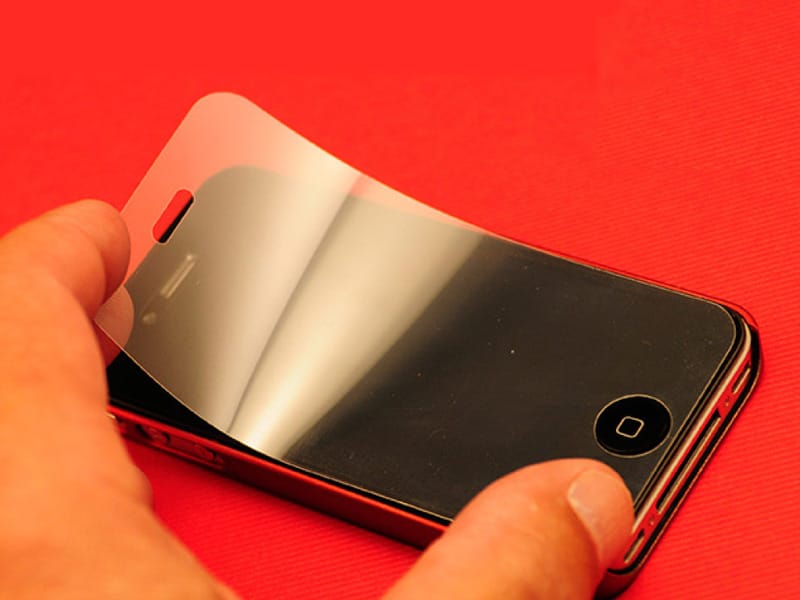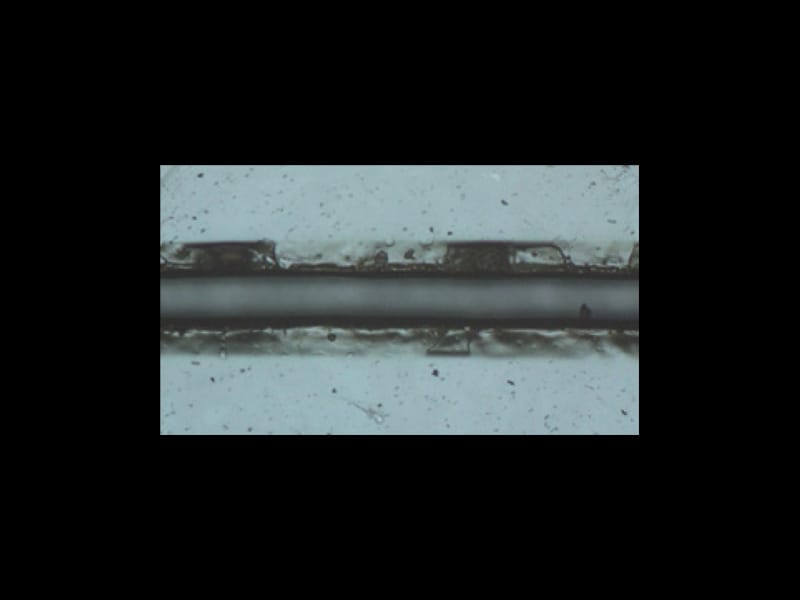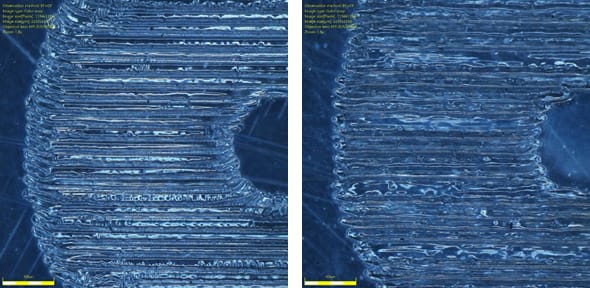Processing 3M® Protection Films Using DLMP®

Related Names: |
Anti-Reflection Matte Non-Conductive Protection Film (ARMR220 NC), Glossy LR Protection Film GLR320, Glossy Protection Film GLS100 |
Chemical Names: |
N/A |
Manufacturers: |
3M® |
As the name suggests, 3M® Protection Films protect fragile displays against damage that can occur from everyday use. These products are based on polyester (i.e. PET) film and incorporate a low tack adhesive for easy application and removal. The base film is enhanced with additional layers and coatings to create specialized products for a variety of applications.
Anti-Reflection Matte Non-Conductive Protection Film (ARMR220 NC)
ARMR220 NC uses a non-conductive coating system with near neutral color anti-reflection surface treatment and an anti-glare coating to reduce glare and total reflected light.
Glossy LR Protective Film GLR320
GLR320 is a smooth, optically clear protection film with an anti-reflective coating. This provides up to 93% light transmission with no color distortion.
Glossy Protection Film GLS100
GLS100 Glossy Protection Film provides protection for smooth displays or can be used to transform matte display textures to a high gloss. It is optically clear and provides greater than 93% light transmission.
3M Protection Films are also available without an adhesive backing. Typical thickness for all films (adhesive layer included) is 0.006” (0.155 mm).
3M™ Protection Films and DLMP® Technology
The thin thermoplastic film construction makes 3M Protection Films highly compatible with DLMP (Digital Laser Material Processing) technology. This material undergoes rapid degradation and vaporization, unlike thermoset materials that may oxidize and char. The influence that this property has on the results of DLMP technology is discussed in detail in the following sections.
The most useful effects of laser energy with 3M Protection films are material ablation and material modification. Each of these processes is discussed in its respective section below.
For more information see our Laser Material Processing Whitepaper.
Ablation of Material
Organic polymers, such as those in various layers that make up 3M Protection Films, are excellent absorbers of CO2 laser energy. When the polymer absorbs laser energy, it rapidly converts optical energy into molecular vibrations leading to rapid chemical degradation. Material directly in the laser path is ablated and carried away as vapor. The material just outside of the laser's spot or path will conduct some heat, but not enough for complete and thorough combustion and ablation. This area of thermal affect is often referred to as the heat affected zone or HAZ. The HAZ for 3M Protection Films is very small due to the low power required to process the thin material. The vapors generated by laser ablation may deposit on adjacent areas of the film. Several methods can be employed to combat this deposition.
CO2 lasers are commonly available in two wavelengths, 10.6 μm and 9.3 μm. 10.6 μm CO2 lasers are by far the most common, but PET processing is one instance where 9.3 μm lasers hold a clear advantage. PET has a higher absorptivity at 9.3 μm, meaning laser energy is more fully and efficiently converted into heat. The differences between these two laser wavelengths are explored further in the individual processing sections.
Material Modification
When using DLMP technology to cut material, enough energy is applied to vaporize all of the material directly in the laser path. The laser power can also be precisely controlled to only slightly melt the surface of the film, which quickly solidifies. This modifies the texture, giving the film a frosted appearance. Both CO2 laser wavelengths are capable of marking and cutting polyester films, but the 9.3 μm laser will produce greater contrast when marking due to its higher absorptivity. The top example shows the textural differences between 9.3 μm (left) and 10.6 μm (right) laser markings. Raster lines are crisp and well-defined with 9.3 μm markings, while 10.6 μm raster lines appear muddled. When the laser energy is used to produce a human- and/or machine-readable identification or information on a material, such as a barcode, date/lot code, serial number or part number, the process is considered laser marking. Laser marking 3M Protection Films will yield a frosted texture. The bottom image shows a part number marked onto 3M Glossy LR Protection Film GLR320.Laser Marking
Combined Processes
Environmental, Health and Safety Considerations
Laser material interactions almost always create gaseous effluent and/or particles. Processing 3M Glossy LR Protection Film GLR320 with a CO2 laser generates vapors primarily containing carbon monoxide, acetone, methyl isobutyrate, methyl acetate, benzene and dihydroxydimethylsilane. The effluent from processing 3M Protection Films should be routed to the exterior environment. Alternatively, it may be treated with a filtration system first and then routed to an exterior environment. Vapors from laser processing polyester-based products are flammable. Laser processing 3M Protection Films should always be supervised.






